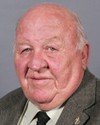Madam Speaker, it was a few months ago that we had a debate in the House on another opposition motion from the Reform Party. Reformers were jumping up and down in the House and demanding that the House of Commons approve a resolution to go to the Supreme Court of Canada to get a constitutional ruling on the Nisga'a treaty. Here we are today with another opposition day motion from the Reform Party. They are jumping up and down today on what? Now they want a referendum.
One thing has become very clear in this debate, that the Reform Party wants anything but negotiation and resolution. It will look at anything rather than sit down, negotiate and look for workable solutions such as has happened with the Nisga'a treaty. That has been its agenda.
We need to be very clear that today's debate on the motion from the Reform Party has nothing to do with any principle around this issue. It has to do with a Reform Party agenda to create division. It wants to seize on this issue because it sees it as a political gold mine to create fear, uncertainty, bias and anti-aboriginal sentiment.
Surprise, surprise. It is now lined up with the B.C. Reform Party, the B.C. Liberal Party, and is on its little campaign with Mr. Campbell and Mr. Vander Zalm. What a great alliance. Let us make no mistake that it is really a campaign of political opportunism to systematically, consciously and deliberately conduct a campaign of misinformation, fear and opposition to entitlement of aboriginal rights.
If there were any doubt of that we just had to listen to question period today to hear the questions from Reform members, including those by the leader of the party who said that the Nisga'a treaty was an affront to equality. The Reform leader is dead wrong. He knows it. Everybody knows that this treaty is actually about equality. It is about social justice. It is about restoring rights to aboriginal people.
The motion before us today has nothing to do with democracy. The referendum just happens to be the flavour of the day that the Reform Party wants to use. It has nothing to do with democracy. It is clearly a desperate attempt to derail a 20 year treaty process that has been negotiated in good faith by the Nisga'a people, the representatives of the federal government and the provincial government. It has now resulted in an historic agreement that is just, that is fair, and that is a perfect fit with our constitution.
That is not just my opinion. That is the opinion of business leaders. That is the opinion of labour leaders. That is the opinion of thousands of people and hundreds and hundreds of groups in British Columbia that have come to the same conclusion.
I attended the aboriginal affairs parliamentary committee meeting last Friday in Vancouver. I had the honour to hear some of the witnesses who came before the committee. I heard Mr. Ken Georgetti, president of the Canadian Labour Congress; Mr. Jim Sinclair, president of the British Columbia Federation of Labour; Angie Schira from the British Columbia Federation of Labour; and Mr. John Shields, former president of the British Columbia government employees' union.
They laid out for us was how they as a labour movement had been very involved in talking to their members, the hundreds of thousands of members of the labour movement in British Columbia. They toured the province to get out information, to get feedback and participated in the advisory committee that existed.
We also heard from some very well known and high profile business leaders in our province, including the head of B.C. Hydro, a former Social Credit cabinet minister. We heard from the chair of Vancouver Board of Trade and from the chair of Canadian National Railway.
Their message was very simple and very clear. They too had observed and participated in the process. They wanted to see this treaty ratified by the House because they understood that it brought about a certainty, an equality and a real partnership in the relationship between aboriginal people, between the Nisga'a people and non-aboriginal people which includes the business community.
They told that committee very strongly in no uncertain terms that they wanted to see this treaty go through because they believed that negotiation and resolution was far preferable to conflict, litigation, and year after year of court battles, lawyers, uncertainty and economic chaos. That came from the business community.
I thought it was a very good hearing, but I have to say that I was also ashamed to be at that hearing. A bunch of people came in, apparently with their leader, Mr. Vander Zalm. He sat there very smugly with a grin on his face as his members hurled out obscenities and all kinds of insults. They were just a bunch of yahoos. Their sole agenda was to disrupt a democratic process and to create fear and uncertainty. Their agenda was the same as the Reform Party's agenda.
It is important for us to know exactly Mr. Vander Zalm's position. He is saying publicly that the treaty will perpetuate the old reservation system of isolated collectives and feudal overtones. Mr. Vander Zalm, like the B.C. Reform Party, like the federal Reform Party, is dead wrong. He knows that he is pedalling information that is a distortion of what is actually going on.
Even today in the Globe and Mail the chief negotiator for the federal government has made it clear that the Nisga'a final agreement brings to an end the application of the Indian Act to the Nisga'a and to their lands. The Nisga'a will own Nisga'a lands just as other Canadians hold title to their lands. Through the final agreement all the individual Nisga'a homeowners will receive private property rights to their residential lots. We can clearly see that Mr. Vander Zalm's assertion is dead wrong.
I also note that we heard from Reformers that they wanted a referendum. It is important to note that when B.C. as a province joined the Nisga'a treaty negotiations the government of the day agreed that the province would ratify the treaty in the legislature. There was never any mention of a referendum being raised.
By the way, who was the government in 1990? Surprise, surprise, It was Mr. Vander Zalm's government. It was the Social Credit government that agreed and set the ground rules for the treaty negotiation process.
We have heard that only through a referendum will there be consultation. It has become very clear that a referendum is being used as a smoke screen and a ploy to derail the treaty.
If we want to look at democratic process, if we want to look at consultation, we only have to see what happened in British Columbia and note that this legislation has had the longest debate of any legislation in the history of the province at 116 hours. There were 450 meetings with advisory groups and the public. There were 31 public hearings in 27 communities. There were 20,000 calls to a 1-800 information line and more than 250,000 visits to the provincial aboriginal affairs ministry website.
Anyone who has taken the time to objectively look at what this process has unfolded and to look at the information that has been provided to the public will be very clear that it has been transparent, democratic and open. There has been real debate on the issue.
Instead what we see today is a motion from the Reform Party that is simply frivolous. It is more than frivolous; it is destructive in its intention to sabotage what has been a very good model for a process for coming to a treaty. Not that this treaty will become the template for all other treaties, but the process of negotiation and resolution is something we should abide by.
I want to say to the Reform Party, shame on it for using the guise of a referendum to derail what has been a democratic process. Shame on it for saying that it stands up for equality, yet it is here today to deny the Nisga'a people their equality under the constitution. Shame on the Reform Party for distorting this treaty and for peddling all of its propaganda out to the communities so that people now are totally confused.
The truth must be told. It will be told. This treaty will be ratified.









